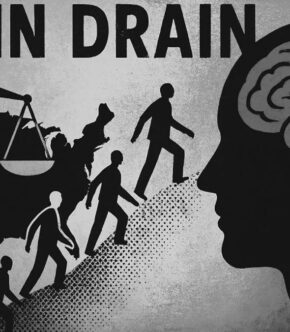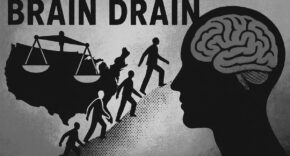As fertility rates fall and populations get older, many wealthy nations are bracing for slower economic growth in the decades ahead. According to the Organization for Economic Cooperation and Development (OECD), the biggest threat isn’t inflation or debt – it’s demographics.
The OECD’s Grim Outlook
The OECD, a Paris-based organization made up of 38 member countries, released a report warning that per capita GDP across its members will likely grow at just 0.6% annually between now and 2060. That’s a sharp decline from the 1% average before 2020. The primary reason: fewer people working, more people aging out of the labor force.
By 2060, the number of working-age people in OECD countries will have shrunk by 8%. Some countries will see far sharper declines—over 30% in more than a quarter of member nations. Meanwhile, the ratio of people past working age to those between 20 and 64 will rise from 31% today to 52%. In Italy, Japan, Poland, Spain, and South Korea, that ratio is expected to exceed 75%.
Stefano Scarpetta, the OECD’s director for employment, put it bluntly: “The economy has entered a new era, where the challenge shifts from a shortage of jobs to a shortage of workers.”
U.S. and Ireland: The Exceptions
Not every country is expected to decline at the same rate. The U.S. and Ireland stand out as exceptions. The OECD projects no significant change in their income growth per person, mainly because the share of the working population in those countries has already declined, softening the demographic shock.
Countries like Denmark, France, and Portugal will also see only modest slowdowns. Still, unless proactive steps are taken, the long-term trend across much of the developed world is clear: fewer workers, slower growth.
What the Data Shows
A separate study published in the American Economic Journal: Macroeconomics (by Nicole Maestas, Kathleen Mullen, and David Powell) offers more detail. Examining data from 1980 to 2010 across U.S. states, the researchers found that every 10% increase in the share of the population over age 60 led to a 5.5% drop in GDP per capita. Two-thirds of this decline came from slower labor productivity. The rest was due to reduced employment.
The study estimated that aging alone lowered U.S. GDP growth by 0.3 percentage points per year during that period—and that trend is expected to worsen. From 2020 to 2030, they project another 0.6-point annual slowdown due to continued population aging.
Limited Tax Revenue, Rising Costs
Demographic shifts aren’t just shrinking the labor force. They’re also affecting government budgets. OECD researchers modeled how population aging will impact tax revenue. While property and corporate taxes may keep pace with GDP, personal income taxes and payroll taxes will decline in per capita terms. That’s because older people tend to earn less income from work and rely more on savings and assets.
For most OECD countries, this means government revenue per person could fall by as much as 8%, even as public spending on pensions and healthcare rises.
Can Immigration, Women, and Seniors Save the Day?
The OECD sees only a few realistic ways to counteract these trends. One is to increase the participation of older people in the workforce. If all countries raised retirement age and job retention to match the best-performing countries, per capita income growth could rise by 0.2 percentage points in half of OECD nations.
Encouraging more women to work would have a similar effect. And allowing higher rates of legal immigration could also help, though to a lesser extent. On the flip side, countries trying to reduce immigration—like the U.S.—may be setting themselves up for even slower growth. According to Stéphane Carcillo, head of the OECD’s Jobs and Income Division, ending regular labor migration could shave off another 0.1 percentage points of annual income growth in the U.S.
As for efforts to raise birth rates, the OECD was not optimistic. Even in countries like Hungary, which offer generous family incentives, fertility rates are unlikely to return to replacement levels anytime soon. And even if they did, those children wouldn’t enter the workforce for at least 20 years.
Can Artificial Intelligence Fill the Gap?
Some policymakers have pinned their hopes on artificial intelligence to boost productivity and make up for shrinking labor pools. The OECD isn’t convinced. “While AI can improve productivity, it is by no means a substitute or silver bullet for a lack of human workers,” said Scarpetta.
The Maestas study also found that AI and capital investments have not fully offset the drag on growth caused by an aging population. Despite theoretical claims that labor shortages might lead to automation-driven productivity booms, the data doesn’t yet support that view.
The Optimists vs. the Pessimists
Optimists argue that aging societies will adapt. They point to past innovations during periods of labor scarcity—like the mechanization of agriculture or the rise of computers—and say this time won’t be different. Economists like Daron Acemoglu and Pascual Restrepo have suggested aging can spark investment in robotics and automation.
Pessimists see more risk. They note that productivity growth has already slowed and that an older society might innovate less. Labor shortages may also trigger inflation, higher taxes, and intergenerational conflict, as smaller working populations support growing numbers of retirees.
Worse, the impact won’t be evenly spread. Some countries—particularly those with declining populations and rigid labor policies—will struggle more than others. Without action, the next few decades could bring not only economic stagnation but social strain.
The warning is clear: unless nations act now, aging populations will drag down future economic growth and strain government budgets. Solutions exist—increasing labor force participation, raising immigration, improving productivity—but they won’t happen on their own. If governments fail to act, the coming decades may be marked by lower incomes, higher taxes, and growing tensions between young and old.











